
2019 Common Ground Alliance Forum | What We Heard
Tuesday, July 30, 2019
By: Kevin Chlad - Adirondack Council Director of Government Relations
More than 275 people gathered last week for the 2019 Adirondack Common Ground Alliance (CGA) Forum, now in its 13th year, to discuss current challenges and opportunities for the Adirondack Park. The CGA is a diverse network of dedicated people who focus on addressing issues that affect the whole Adirondack Park: its communities, institutions, people and environment. Stakeholder citizens come together to foster communication, seek collaborative solutions, set the stage for constructive action, develop shared vision and strategies and communicate with one voice. Participants divided into 11 breakout sessions to discuss a spectrum of current threats and opportunities that could impact the Park’s future, to brainstorm transformative solutions.
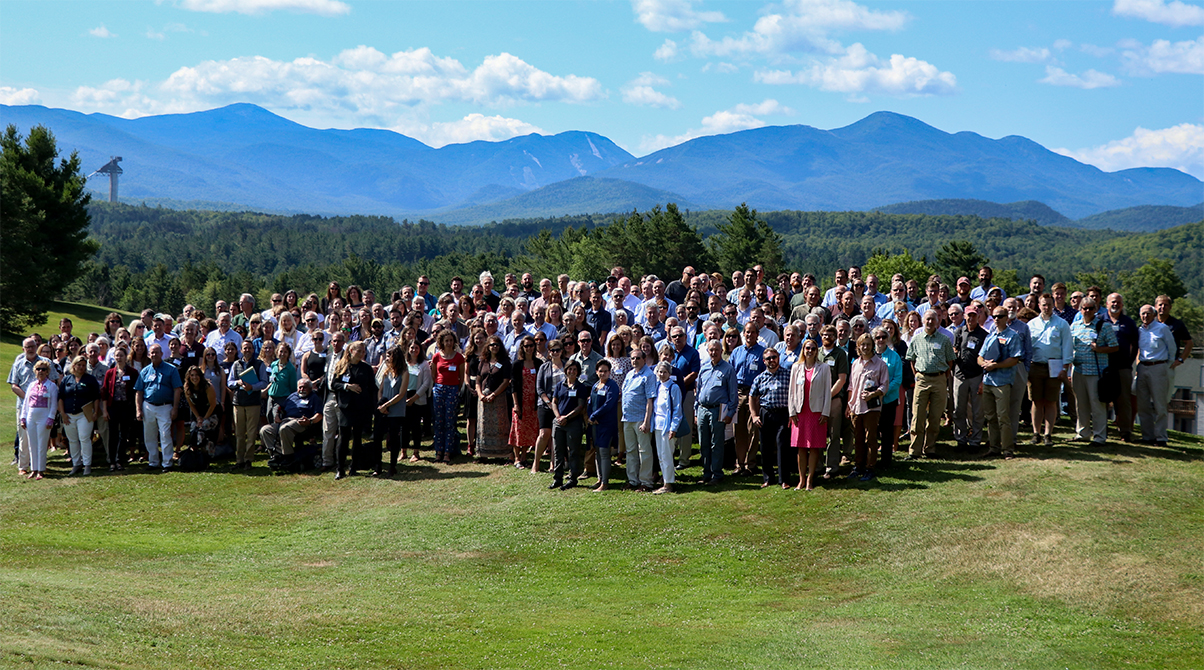
Here is a summary of what we heard:
Support Efforts to Gather and Understand Adirondack-Specific Data: This group discussed “Adirondack Analytics.” Questions asked included “what information exists, what Information is needed and for whom?” With the availability of so many studies and reports concerning Adirondack demographics, tourism trends, employment and science, this group explored the broader questions regarding what data is still needed about the Adirondack Park, and how can it be pulled together in a manner that is most helpful to the greatest number of people. Participants recommended, first and foremost, that a central data repository should be developed for the Adirondacks. Adirondack stakeholders should advocate for census data that is specific to the Adirondacks, and for census zones that are specific to the Adirondacks, so data is not skewed by populations and trends outside the Park boundary. Efforts should be undertaken to enhance alliances in the sharing and use of already collected data. Long term funding should be established for the collection of environmental and socioeconomic data for the Adirondacks.
Improve Adirondack Communications Infrastructure (Cellular, Broadband, Emergency): The Communications Infrastructure group concluded that the state of current coverage and infrastructure, for cell phones, broadband and emergency communications, is inadequate. The focus was on how coverage is still completely absent in some communities and along some travel corridors where it is needed, or is actually getting worse. Participants generally felt that residents, businesses and visitors to the Park should have universal access. It was noted that coverage has improved in some locations over the last twenty years, such as along the Northway corridor, that in remote Wilderness areas there should not be an expectation of cell coverage, and that we don't want to spoil the scenic landscape of the Park with lots of visible towers. The group recommends that the state move immediately to appoint members and staff to the Governor's Communications Task Force announced in January 2019, and fund 100% of last mile broadband. The group recommended that communities work together to map and propose solutions to the Park’s current communications gaps.
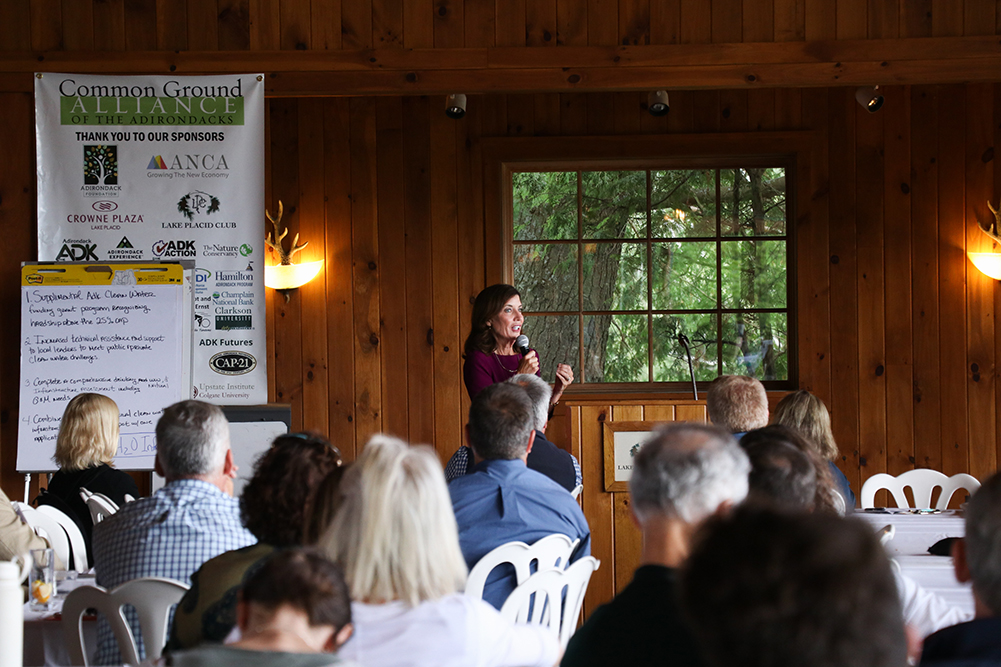 New York State Lieutenant Governor Kathy Hochul
New York State Lieutenant Governor Kathy Hochul
Strengthen Aquatic Invasive Species Prevention: Participants agreed that aquatic invasive species (AIS) constitute one of the greatest threats to the future of our Adirondack economy and environment. The current boat inspection and decontamination law requiring boaters to take “reasonable precautions” to clean, drain, and dry their boats must be strengthened and extended in the 2020 legislative session. State funding must be enhanced to further support this program and the local communities who already contribute taxpayer and private dollars to the fight. It was also recommended that a comprehensive AIS prevention and management plan be developed to chart a path to comprehensive Park protections, which can serve as a model for other regions of the state. Currently, seven states have model AIS prevention programs and New York State is not one of them, according to Mississippi Sea Grant, a leading researcher of AIS prevention policy. One of the key points of celebration was the implementation of mandatory boat inspection and washing programs on Lake George and Loon Lake.
Fund Additional Clean Water Infrastructure: Clean water infrastructure, though not visible on a day-to-day basis, is critical to keeping Adirondack water healthy and pure for the people and wildlife that depend on it. Participants agreed that we face a challenge in the Adirondacks because small numbers of residents are responsible for clean water systems that support large numbers of visitors, which results in a gap between the cost of their projects and the amount they can actually afford. It was suggested that to solve this, New York State should create a Supplemental Adirondack Clean Water Grant for hardship communities requiring grant funding that exceeds the Environmental Facilities Corp. 25% cap on grants. Furthermore, the state should provide more technical assistance to and education for local leaders. Communities should conduct comprehensive clean water needs assessments including wastewater, drinking water and natural infrastructure as well as on-going Operations and Maintenance needs. Though it would not be easy, federal and state grants for clean water should be put in one pot of money and gotten made available thru one application process.
Combat Climate Change: Participants agreed that climate change is the issue of our lifetime, and that the Adirondacks can play a unique role in the flight to slow the warming of our planet. Participants agreed that the state should incentivize carbon sequestration and forest ownership by monetizing the carbon value and recognizing the intrinsic value of forests. This can be accomplished by establishing a carbon market and updating forest tax laws. With the recent establishment of the Climate Leadership and Community Protection Act, it was suggested that the Adirondacks have a representative on the Climate Action Council that was created. The Park’s communities (or the communities in partnership with the Adirondack Park Agency and State Agencies and authorities) should create and implement a comprehensive Adirondack energy siting plan to guide appropriate and practical renewable energy projects throughout the Park. This may require support from experts in this field.
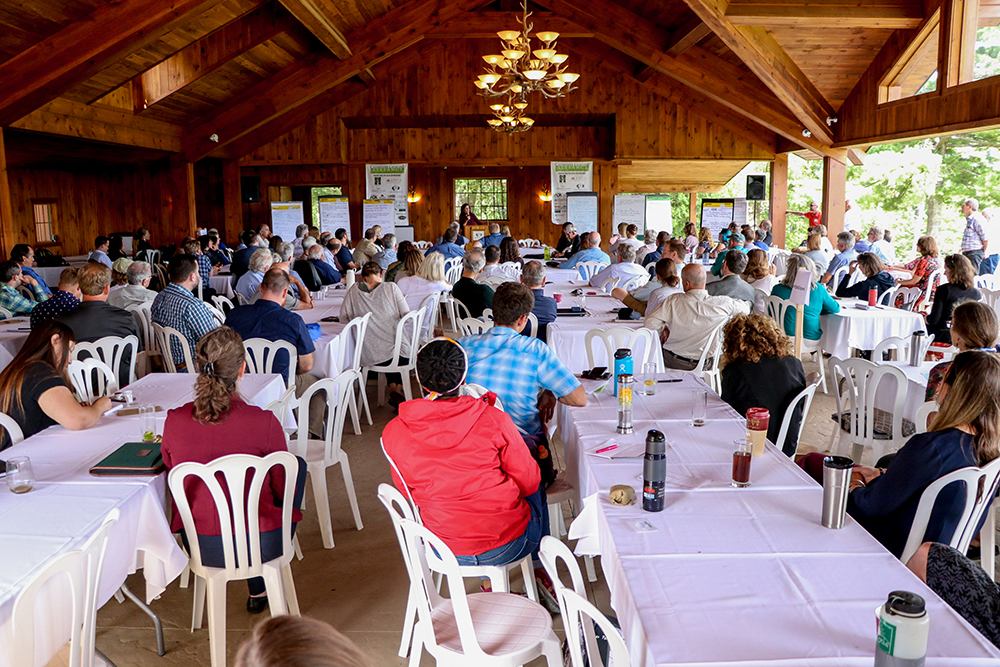
Develop a Competitive Regional Strategy: The Adirondacks face demographic and economic challenges that could be overcome with a region-wide strategy that aligns around competitive assets and new opportunities. Participants agreed that the state should fund a regional strategy to develop unified marketing with a goal of increasing the population of Park residents. Following recent examples, Adirondack communities should get better at networking and collaborating on initiatives. Some suggested that Park visitors should pay an entry fee that goes towards the betterment of Park and community resources.
Empower Local Ownership and Ready a New Generation of Entrepreneurs: Participants agreed that the state should increase funding for marketing, and better promote main street business assistance and services that are already available. Existing state programs should be scaled down to match the needs of rural North Country businesses, by shortening applications, emphasizing the quality of the jobs created (not the number), and incentivizing co-op ownership. Communities should collaborate on a regional scale to provide wrap-around services to aspiring entrepreneurs, such as: day care, transportation, education, and accounting/ attorney services.
Position Adirondack Communities for Success: Participants agreed that the state should increase investments that support planning efforts for Adirondack communities, so that Towns and Villages can develop their modern vision. Grant funding amounts could be better aligned with the scale of community needs in the Adirondacks: while larger communities can make use of larger grants that are more cumbersome to apply for, smaller communities could take advantage of smaller grants that are easier to apply for. Communities should define and quantify measures of success specific to their desired vision. Some participants even suggested a state celebration day for the Adirondacks!
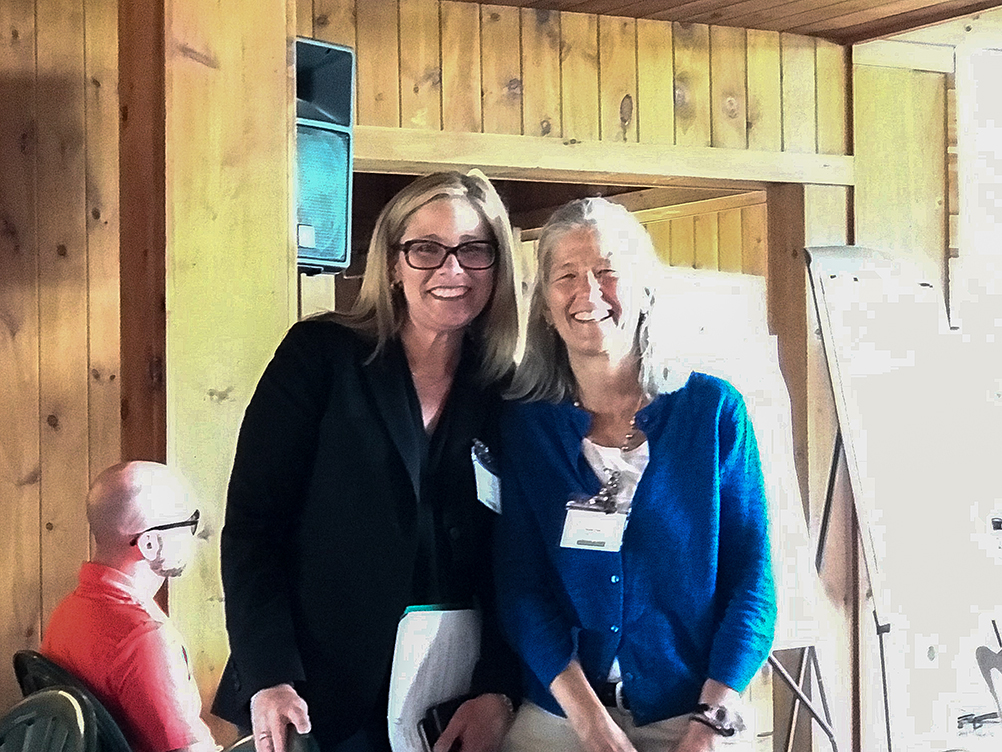 Kelly Turturro Acting Executive Deputy Commissioner of the NYS Department of Environmental Conservation
Kelly Turturro Acting Executive Deputy Commissioner of the NYS Department of Environmental Conservation
and Diane Fish Adirondack Council Deputy Director
Aggressively Address Road Salt Pollution of Drinking Water: It was recognized that the continued over-application of road salt on state roads is negatively impacting drinking water quality, public health. Public safety is compromised and Economic Impacts are growing. While the New York State Department of Transportation manages roughly 25 percent of the lane-miles of roads in the Adirondacks, peer-reviewed science proves that they are responsible for applying 84 percent of the road salt that has been applied here since the 1980 Olympics. That has led to more than a quarter of the wells tested exceeding Environmental Protection Agency and Department of Health guidelines for acceptable chloride content. To rise to the occasion of this public health crisis, participants proposed that a blue ribbon panel of experts be established in state law. It is recommended that the panel be tasked in the coming year with assessing the extent of this pollution, plan and implement a pilot project for road salt reduction on a park-wide scale, and develop guidance for measurably reducing chloride content in ground water within the next few years. The panel would consist of appointments made by the Governor, legislature and attorney general, and designees for the departments of health, environmental conservation and transportation. It was suggested that the Park’s communities implement a road salt applicator certification program. Landowners should have the ability to seek recourse for the irreversible damage done to their aquifers, and a public awareness campaign should be funded and promoted.
Invest in Transportation Planning: With the vast majority of transportation occurring by way of internal combustion automobile along the major thoroughfares of the Adirondacks, there is a significant challenge on the horizon when it comes to modernizing the way people move through the Park as we progress in the fight against climate change. Participants agreed that the state should establish and fund an Adirondack Transit Working Group, which will inventory current public transit infrastructure, assess user patterns and needs, and develop recommendations for implementation. A pilot project could be implemented for the 2023 World University Games in Lake Placid.
Making Communities More Welcoming to New Residents and Visitors in the Adirondacks: This group explored the issue of diversity, with an eye to attracting and keeping people to live in the Adirondack Park as year-round residents. The facilitators pushed to think about grassroots or "bottom-up" solutions, not systemic solutions. Participants agreed that the Adirondack Diversity Initiative plays a critical role in making the Adirondacks more welcoming and inclusive to visitors of all backgrounds and experiences, and needs to be sustained. Discount programs for new residents and employees with diversity in socioeconomic status promote equity in sharing visitor experiences (tickets to Whiteface, Fort Ticonderoga etc.) and could foster a local connection and sense of place. There should be an effort to bring more diverse voices into community leadership roles to have better representation in decision making. Communities should establish or update their statement of values to declare inclusivity as a priority.
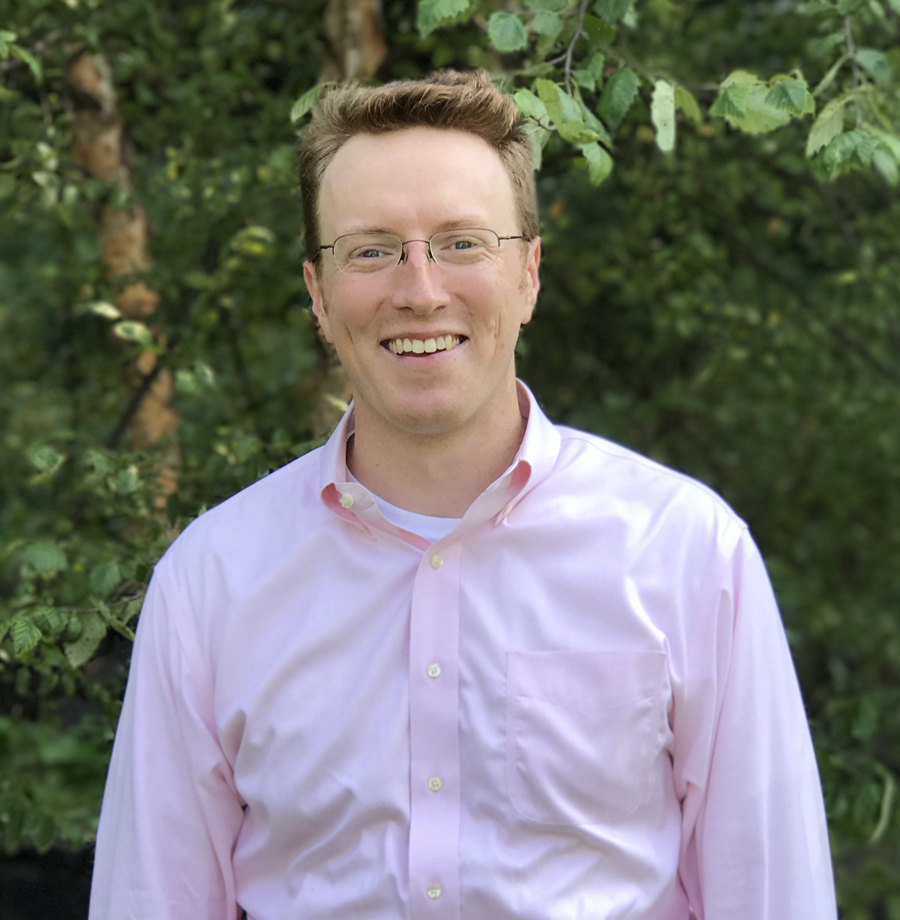
Kevin Chlad joined the Adirondack Council staff in 2011. He leads the Council’s Albany-based Government Relations team, building coalitions and lobbying government officials to improve protection and grow funding for the Adirondack Park. |
||




